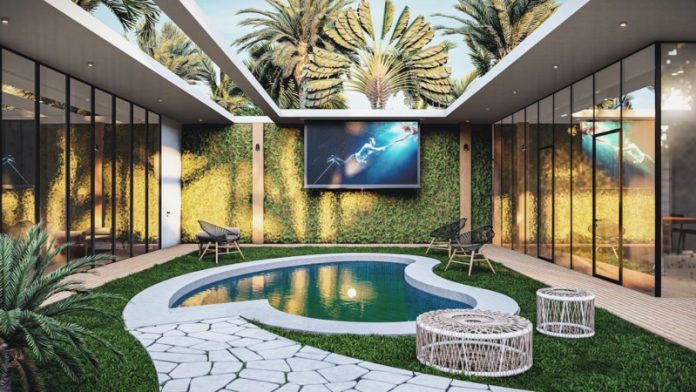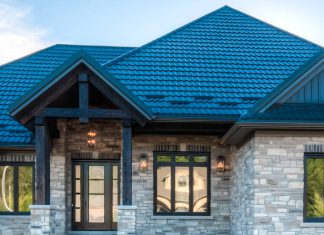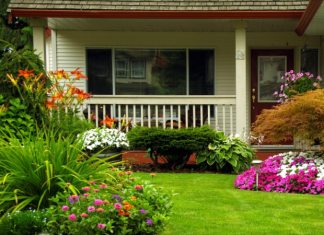You’ve cultivated a serene and captivating garden in your backyard with fruit trees, flower plants, and herbs. Still, it seems like your backyard is missing something that will truly bring it to life. That’s where hardscaping comes in. Hardscaping adds structure or defined space to your outdoors, such as paths, patios, lighting, etc.
Incorporating hardscaping elements allows you to transform your backyard into a functional and visually appealing area for relaxation and entertainment.
But how do you do that?
We’ll help you understand the basics of hardscaping and guide you on creating paths and more in your backyard.
Planning Your Hardscaping Project
Before you dive into hardscaping, it’s essential to have a clear plan in place. Follow these steps to ensure a successful project:
Assess your needs: Determine how you intend to use your backyard space. Do you want a pathway that connects different areas? Would you like a patio for outdoor dining and gatherings? Understanding your needs will guide your hardscaping decisions.
Consider your budget: Establish a realistic budget for your project. This will help you prioritize and choose materials that fit your financial constraints.
Take measurements: Measure the dimensions of your backyard to determine the available space for your hardscaping features. This will help you decide when selecting materials and designing pathways or patios.
Choosing Materials for Your Hardscaping Features
Once you have a plan, select the right materials for your hardscaping project. You can use various materials, each having a different style and functionality. Consider these factors:
Durability: Opt for materials that can withstand the local climate and weather conditions. Look for materials that are resistant to fading, cracking, and erosion.
Aesthetics: Choose materials that complement your home’s and landscape’s style and theme. Consider the colors, textures, and patterns that will enhance the overall appeal of your backyard.
Maintenance: Consider the level of maintenance required for each material. Some materials require regular cleaning or sealing, while others are more low-maintenance.
Budget: Compare the cost of different materials and select options that align with your budget. Remember that higher-quality materials have a higher price tag but offer better longevity and aesthetics.
Creating Paths in Your Backyard

Here are the steps to create paths in your outdoor space:
Choose a path location: Determine where you want your path to be and mark the route using chalk or spray paint. Consider the natural flow of your walkway, accessibility, and focal points.
Prepare the area: Clear the path area of any vegetation, rocks, or debris. To create a stable foundation, level the ground and remove turf or topsoil.
Install edging: Install edging materials, such as bricks or stones, along the sides of the path to create a defined border.
Lay the base: Apply a layer of crushed stone or gravel as a base for your path. If you are wondering how much stone do I need, calculate the total area you must cover. Compact the base using a tamper or plate compactor to ensure stability.
Lay the paving material: Place your chosen paving material, such as flagstones or concrete pavers, on top of the base. Arrange them in a pattern or design of your choice.
Fill gaps and stabilize: Fill the gaps between the paving material with sand or fine gravel. Use a broom to sweep the material into the gaps and compact it to ensure stability.
Maintain the path: Regularly sweep and clean the path to keep it free from debris. Repair any loose or damaged paving material promptly.
Adding Other Hardscaping Features
There are several other hardscaping features you can consider to enhance your backyard:
Patios: A patio provides a designated area for outdoor dining, lounging, or entertaining. Choose materials with a comfortable and appealing surface, such as concrete, natural stone, or wood.
Retaining walls: If you have sloping areas in your backyard, consider building retaining walls to create terraces or level spaces. These walls can also add visual interest and serve as seating areas.
Water features: Imagine sipping tea in your backyard with the soothing sound of water. A fountain, pond, or waterfall is excellent to add to your backyard. Water features can create a sense of tranquility and serve as focal points in your hardscape design.
Outdoor lighting: Install lighting fixtures to illuminate your hardscaping features and create a warm and inviting ambiance in the evenings. Lighting can also enhance safety and security in your backyard.
Key Takeaways
After all that hard work and effort you’ve put into building a home, you deserve a backyard where you can relax and escape into the calmness of the outdoors. Hardscaping is the key to unlocking the full potential of your backyard.
Correct planning and execution can transform your backyard into a stunning outdoor retreat that reflects your style and enhances your outdoor living experience.
These are the aspects you must follow to create a hardscape as you imagine:
- Assess your needs, consider your budget, and take measurements to ensure a successful hardscaping project.
- Choose durable materials that can withstand the climate, complement your home and landscape, require a manageable maintenance level, and fit your budget.
- Create paths by selecting a location, preparing the area, installing edging, laying the base and paving material, and filling gaps.
- Consider incorporating patios, retaining walls, water features, and outdoor lighting to further enhance the functionality and aesthetics of your outdoor space.















